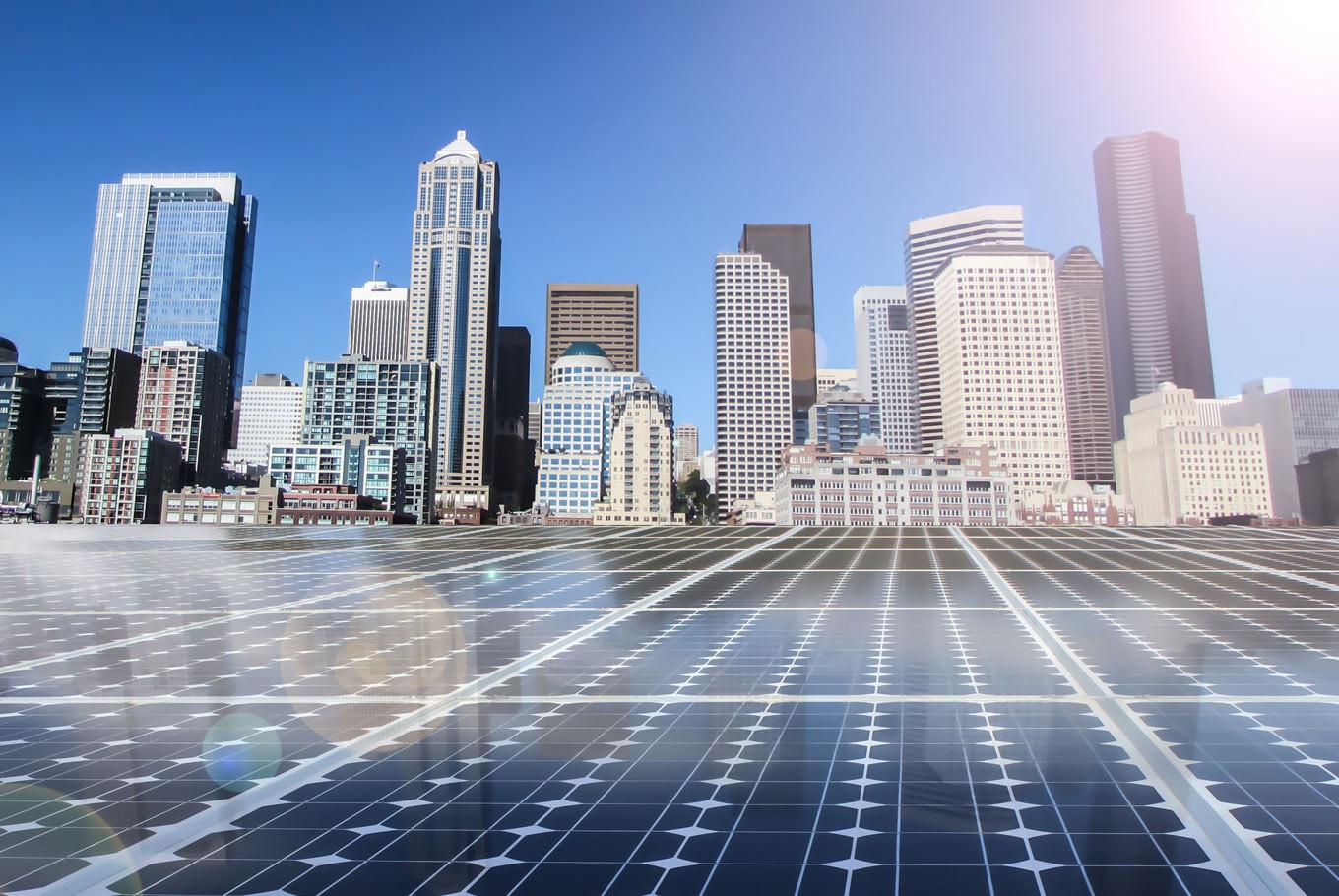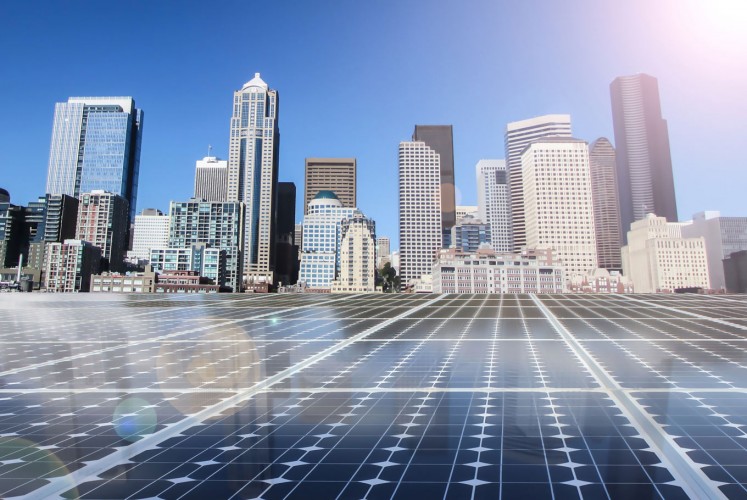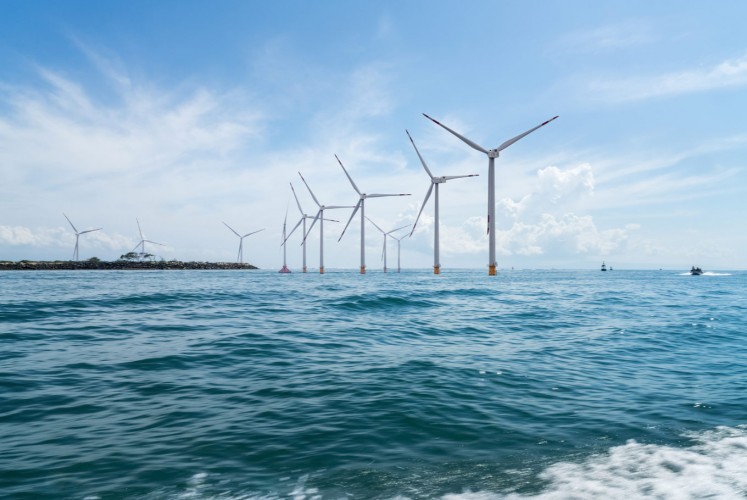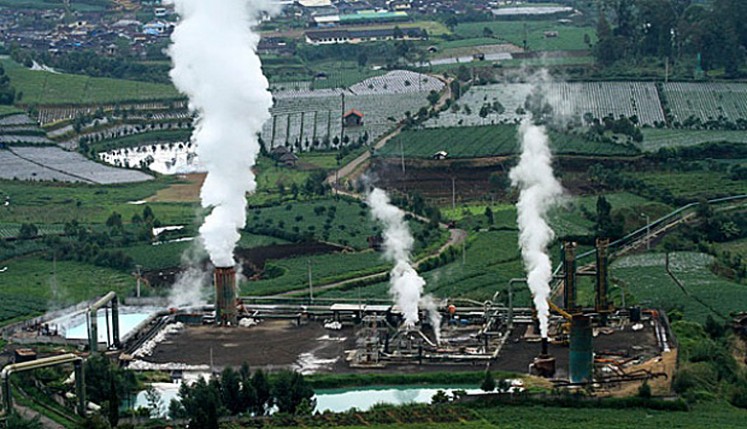Popular Reads
Top Results
Can't find what you're looking for?
View all search resultsPopular Reads
Top Results
Can't find what you're looking for?
View all search resultsIs Indonesia losing favorable clean energy policies?
Change text size
Gift Premium Articles
to Anyone
I
ndonesia once had policies that supported the development of clean energy, but regulatory changes in the last 10 years seem to be the root of the problem of why abundant sources of renewable power in the country have been left mostly untouched after more than seven decades after the country’s independence.
Based on an interview with an industry insider, The Jakarta Post discovered that Indonesia had met the expectations of all stakeholders at least once in clean energy development — or reached a win-win situation.
However, at least in the last five years, the growth of renewable energy in Indonesia has fallen behind that of other Southeast Asian countries. Indonesia’s own regulator, the Energy and Mineral Resources Ministry, was even pessimistic about reaching the development target.
Reminiscing on the ‘good old days’
Nanang Hamdani Basnawi, director of local hydro-based power plant developer Bumiloka and a member of the Indonesian Renewable Energy Society (METI), told the Post that it was a “mystery” to clean energy players that renewable energy policies had turned unfavorable — and even vanished — in just several years.
He added that 10 years ago, the sector had Energy and Mineral Resources Ministerial Regulation No. 31/2009 on new and renewable energy development.
The regulation was like a dream come true for clean energy developers as it accommodated their wishes, such as stipulations on a feed-in tariff scheme and assurance that state-owned electricity company PLN would buy the electricity they produced in a long-term contract.
In the feed-in tariff scheme, the price of electricity for renewable energy developers remains unchanged until the end of a contract.
A solar panel is seen in this picture. Renewable energy progress in Indonesia to date has been underwhelming and related policy and regulations remain uncertain. (Shutterstock/File)The regulation also stipulated a direct appointment scheme, which omits the auction phase to jump-start the development of renewable energy projects.
"The scheme means that anyone who has the potential [to develop a renewable energy plant] can be appointed directly [by PLN] to start the project," Nanang said.
He recalled that a renewable energy power plant in Java at the time received a flat tariff of Rp 656 (4 US cents) per kilowatt hours, especially for hydro-based power plants.
About three years later, the government adjusted the electricity tariff generated from renewable energy plants to Rp 850 per kwh (6 US cents) to make it more economically feasible for some developers.
"That's why you can see a lot of PLTAs [hydro-based power plants] in remote regions that are untouched by PLN’s power system," he said.
Then came Energy and Mineral Resources Ministerial Regulation No. 19/2015, which increased the tariff to 12 US cents per kwh.
The revised regulation, Nanang said, was comprehensive for all types of renewable energy and set out a clear procedure for electricity sales and purchase agreements.
However, he said, the tariff was too expensive for PLN, which then adjusted the rate to 7 US cents per kwh by itself. The new rate, nevertheless, was still favorable for the developers, he said.
The downturn of renewable energy development
The good times in renewable energy development then came to an end when the ministry issued Energy and Mineral Resources Ministerial Regulation No. 50/2017 on renewable energy for electricity, which was criticized as a “disincentive” policy.
Renewable energy players raised three key concerns regarding the regulation: uncertainty in the cost of electricity purchases, use of the Build, Own, Operate and Transfer (BOOT) scheme and shifting the process of determining a project develop from direct appointment to auctions.
An offshore wind farm is seen in this picture. (Shutterstock/File)
Since last year, industry players have been pushing the government to revise an article that causes uncertainty in the cost of electricity purchases. The article stipulates that a maximum price ceiling is set at only 85 percent of the area’s electricity supply cost (BPP), which would make it difficult for renewable energy projects to apply for bank loans.
The 85-percent ceiling was also recently criticized by the European Business Chamber of Commerce in Indonesia (EuroCham), who pointed out it was “too ambiguous” and too risky for investment.
“The word ‘maximum’ means that we don’t know exactly how much [electricity price] we could get from PLN. It is crucial for us to calculate our investment in the project,” Thomas Wagner, EuroCham head for energy working group, told the Post.
Meanwhile, the BOOT scheme, which requires investors to transfer their renewable projects to PLN at the end of their power purchase agreements (PPAs), had made banks reluctant to accept projects as collateral for loans, according to Association of Micro-Hydro Power Plants (APLTMH) chairman Riza Husni.
Lastly, it is widely considered that the change in how qualified renewable energy developers are determined has brought a number of projects to a halt in the past two years.
According to recent government data, 30 of all 75 renewable energy PPAs with a total capacity of 1,581 megawatts, most of which were signed in 2017, still failed to obtain funding.
“Just go back to regulation 19/2015, which all stakeholders agree on, and we can determine a win-win electricity price,” said Nanang of METI. “Because look at what’s happening now: I have yet to see an auction for renewable energy projects after PLN issued the DPT [list of selected providers].”
Environmentally friendly -- The Dieng geothermal power plant (pictured) in Central Java is one of the main sources of renewable energy in Indonesia. (Tempo/Aris Andrianto)Regulation No. 50/2017 stipulates that independent power producers (IPP) should be shortlisted in the DPT before proposing to operate renewable energy projects.
Nanang said that since its issuance, eight out of 12 hydro-based power plant projects under the management of his association with a total capacity of 48 MW had been put on hold since 2017.
“I’ve secured all the land permits and even the financing, but they had to be terminated due to the regulation,” he said. “So, now we have to survive amid regulatory uncertainty.”
The government’s stance
Andy N. Sommeng, then-director general of electricity at the Energy and Mineral Resources Ministry, neither agreed nor disagreed on the criticism, saying that concerns over Regulation No. 50/2017 hampered renewable energy development were merely a matter of difference of opinion.
“My view is that our current electricity system is not ready to handle the technical aspects [of renewable energy],” said Andy, who has now retired from his position.
“One example is the photovoltaic power plant, which needs to be complemented by other energy sources when the sun goes down.”
As for the stipulation that the direct appointment scheme could be replaced with auctions in determining renewable energy developers, Andy said that this was merely a mitigation effort to minimize the chances of graft, including bribery.
“Other than issues on technicalities, why do we have to hurry [to develop renewable energy power plants]? The demand isn’t there yet. PLN has to invest more to realize [the program] and we have an abundance of coal [as a major source of energy],” he said.
While acknowledging that future energy demand would be for renewable sources, Andy believed that shifting directly to clean energy power plants would only widen Indonesia’s current account deficit due to higher imports of renewable energy facilities or machinery.
“We are not lagging in [renewable energy development]. We have to consider the supply and demand [of electricity]. Renewable energy is good, but what’s the point if it does not bring added value to our country and instead forces our country to consume more [imported goods]?” he said.
Zulfikar Manggau, head of PLN’s new and renewable energy division, recently told the Post that the electricity firm would only start auctioning renewable energy projects after the Energy and Mineral Resources Minister approved its new electricity procurement business plan (RUPTL) for the 2019-2028 period.













